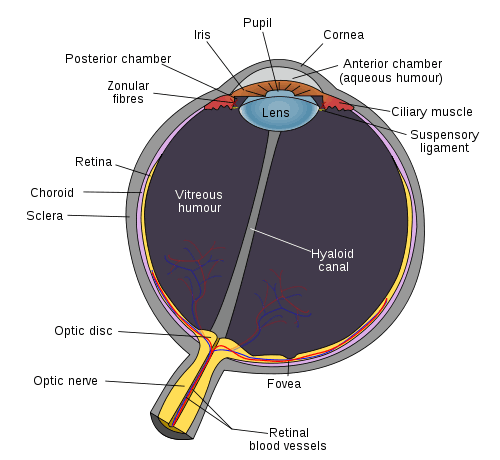Naked Eye Viewing techniques
6.19 - Understand naked eye techniques such as dark adaptation and averted visionDark Adapted Eye
It can take typically 7 minutes for your eyes to become used to darkness and up to 30 minutes to become totally adjusted to the dark conditions of observing. Astronomers take care to ensure they do not ruin their adapted eyes by using torches or bright lights. This is why red torches are used at night time and software from computers is set to a red tint. It is also a reason why it is best to look for faint objects when the Moon is not well lit or is low in the sky.
Averted Vision
When we look straight at a faint object it can 'disappear' only to reappear when we look at an area near it. This is because the centre part of the inside of the eye (the forvea) contains rods which help us distinguish bright light and colour. Areas around the forvea are cone cells which are more sensitive to faint light, making it easier to see faint detail at night.
Relaxed eye
By straining at objects or squinting eyes we place stress on them which makes it harder for the eye to refocus on objects. By relaxing our eyes when we look through a telescope or by using an eye patch we can improve our vision.
Questions
- Why is is important to allow time for your eyes to become adjusted to darkness?
- Why are red torches used by astronomers?
- Explain why faint objects can 'disappear' when you look directly at them.
Summary
Dark Adapted eye
- Taking time for your eyes to get used to darkness
Relaxed eye
- Not straining your eyes
Averted Vision
- Looking slightly away from a faint object allows you to view it more clearly
Links
- Astroblog Dark Adapted eyes
- Orion XT10 Dark Adapted Vision

 | © All Rights Reserved |
| © All Rights Reserved |